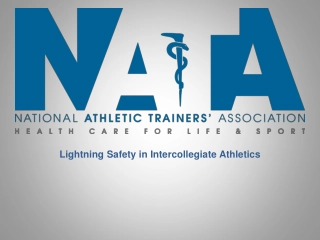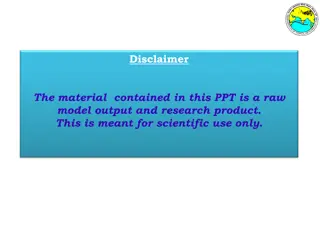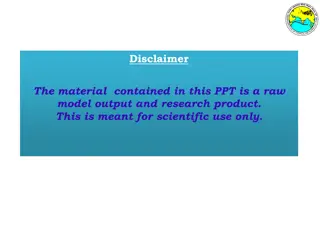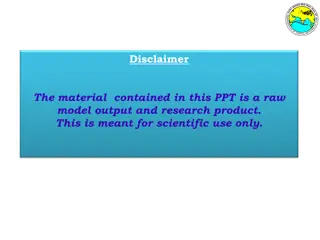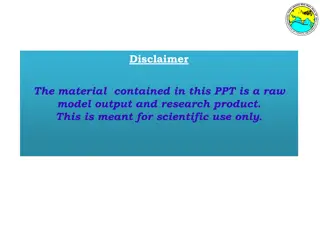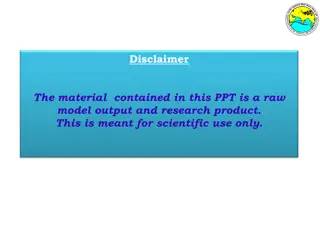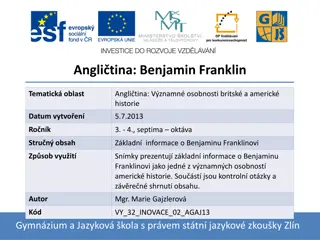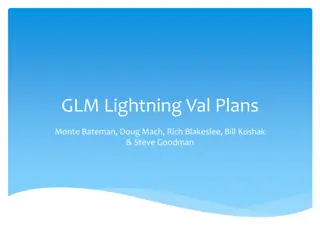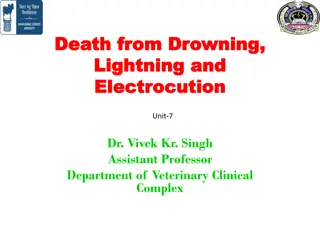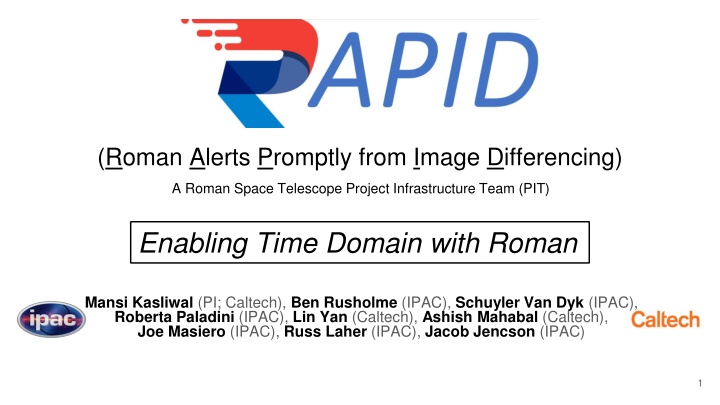
Roman Space Telescope Project Infrastructure Team Services
The Roman Space Telescope Project Infrastructure Team aims to provide four key services to the Roman community, focusing on rapid image differencing, public alert streams, light curve files, and forced photometry. Low latency and community engagement are prioritized, with job opportunities available.
Download Presentation

Please find below an Image/Link to download the presentation.
The content on the website is provided AS IS for your information and personal use only. It may not be sold, licensed, or shared on other websites without obtaining consent from the author. If you encounter any issues during the download, it is possible that the publisher has removed the file from their server.
You are allowed to download the files provided on this website for personal or commercial use, subject to the condition that they are used lawfully. All files are the property of their respective owners.
The content on the website is provided AS IS for your information and personal use only. It may not be sold, licensed, or shared on other websites without obtaining consent from the author.
E N D
Presentation Transcript
(Roman Alerts Promptly from Image Differencing) A Roman Space Telescope Project Infrastructure Team (PIT) Enabling Time Domain with Roman Mansi Kasliwal (PI; Caltech), Ben Rusholme (IPAC), Schuyler Van Dyk (IPAC), Roberta Paladini (IPAC), Lin Yan (Caltech), Ashish Mahabal (Caltech), Joe Masiero (IPAC), Russ Laher (IPAC), Jacob Jencson (IPAC) 1
Our goal is to provide four services to the Roman community: Rapid image-differencing of every new Roman image from a reference image Prompt public alert stream of all Roman transient and variable candidates Source-matched light curve files for every identified Roman candidate Forced-photometry service for photometric history at any observed location 2
Low latency is the high priority for RAPID Pull calibrated Level-2 WFI data from the SOC staging location (< 48 hour turnaround) Execute image differencing and prompt public alert broadcasting (< 1 hour) Includes initial source classification via machine learning Offer forced photometry on difference images (< 24 hour) Append and release light curve history or sources Archive public alerts via STScI MAST 3
RAPID Pipeline Flow Leveraging our previous experience with the Zwicky Transient Facility (ZTF) End-to-end testing and validation 4
Community Engagement: Interact with RAPID! Sign up for announcements from RAPID Visit our website for more info and updates Send us email: rapid@ipac.caltech.edu Join RAPID Slack We want your input and feedback!
RAPID is hiring! Currently 2 open positions: Application Developer (Early career, Python/SQL) Staff Scientist (to be posted AAS soon, for late/end this CY) Please forward to any potential candidates! Further opportunities in FY25



